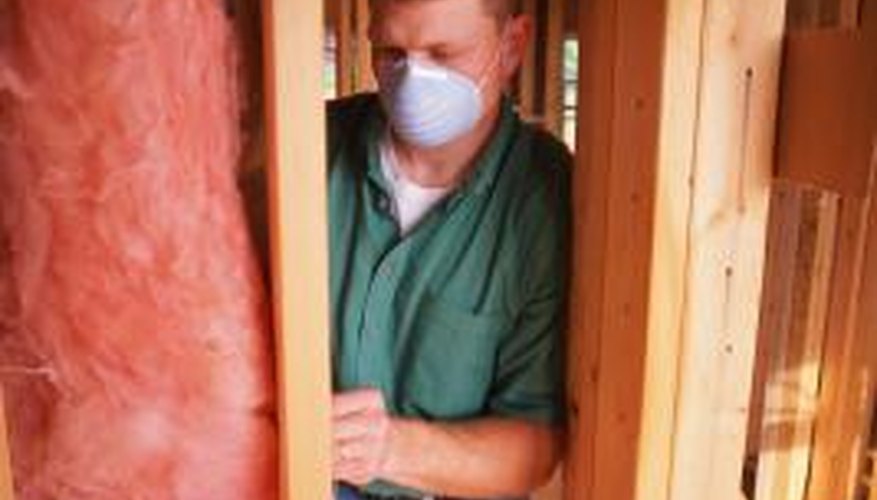Fibreglass, also known as glass wool, is a synthetic fibre. Manufacturers make it by melting glass and drawing it into strands. Workers can use fibreglass insulationin the walls, floors, ceiling and around the ductwork of homes. Contact with free-floating fibres occurs while cutting or installing the insulation. These floating particles make contact with the skin or eyes and you may inhale or swallow them. Health-related effects depend on the type and amount of exposure to the fibreglass.
Inhaling or Swallowing
If you have asthma or bronchitis, wear a dust mask when working with insulation because inhaling the fibres can worsen these conditions. Healthy individuals who inhale the fibres may experience effects such as soreness in the nose and throat and if swallowed, stomach irritation can occur. Little is known about the effects of small fibres, but it is believed that if they get into the lungs and small intestine, adverse side effects such as intestinal blockage may occur.
Contact With Skin
People's reaction when skin is exposed to fibreglass particles varies by person, as some are more sensitive to it. Some develop a rash from particles embedding in the outer layers of the skin while others only experience itching. If particles make contact with eyes, redness and soreness generally occur. There is no evidence that adverse side effects result from skin absorption.
- People's reaction when skin is exposed to fibreglass particles varies by person, as some are more sensitive to it.
- Some develop a rash from particles embedding in the outer layers of the skin while others only experience itching.
First Aid
You can take measures if fibreglass particles make contact. For the eyes, flush with water and remove contacts; call an ophthalmologist if irritation persists. For the skin, wash with plenty of soap and water. If swallowed, get medical attention and do not induce vomiting or take laxatives. For inhalation, move to fresh air and seek medical attention if irritation persists.
- You can take measures if fibreglass particles make contact.
- For inhalation, move to fresh air and seek medical attention if irritation persists.
Safety Precautions
You can limit exposure to fibreglass particles. Wear goggles and a dust mask to avoid inhaling free-floating particles and making contact with the eyes; the mask will also reduce the risk of swallowing particles. Wear long sleeves and gloves to help reduce the risk of skin irritation. Wash clothes worn during exposure separately and rinse the washing machine thoroughly after removing clothing to avoid contaminating other clothing.
- You can limit exposure to fibreglass particles.
- Wear long sleeves and gloves to help reduce the risk of skin irritation.
